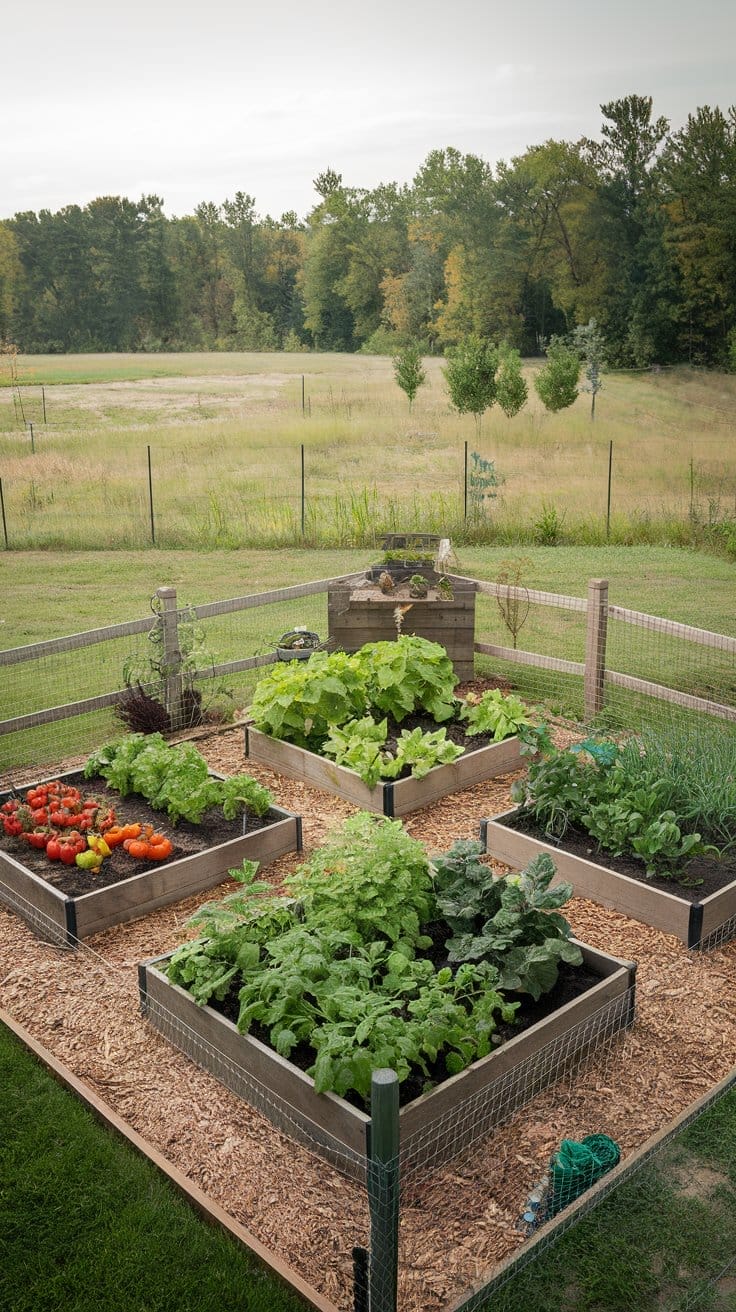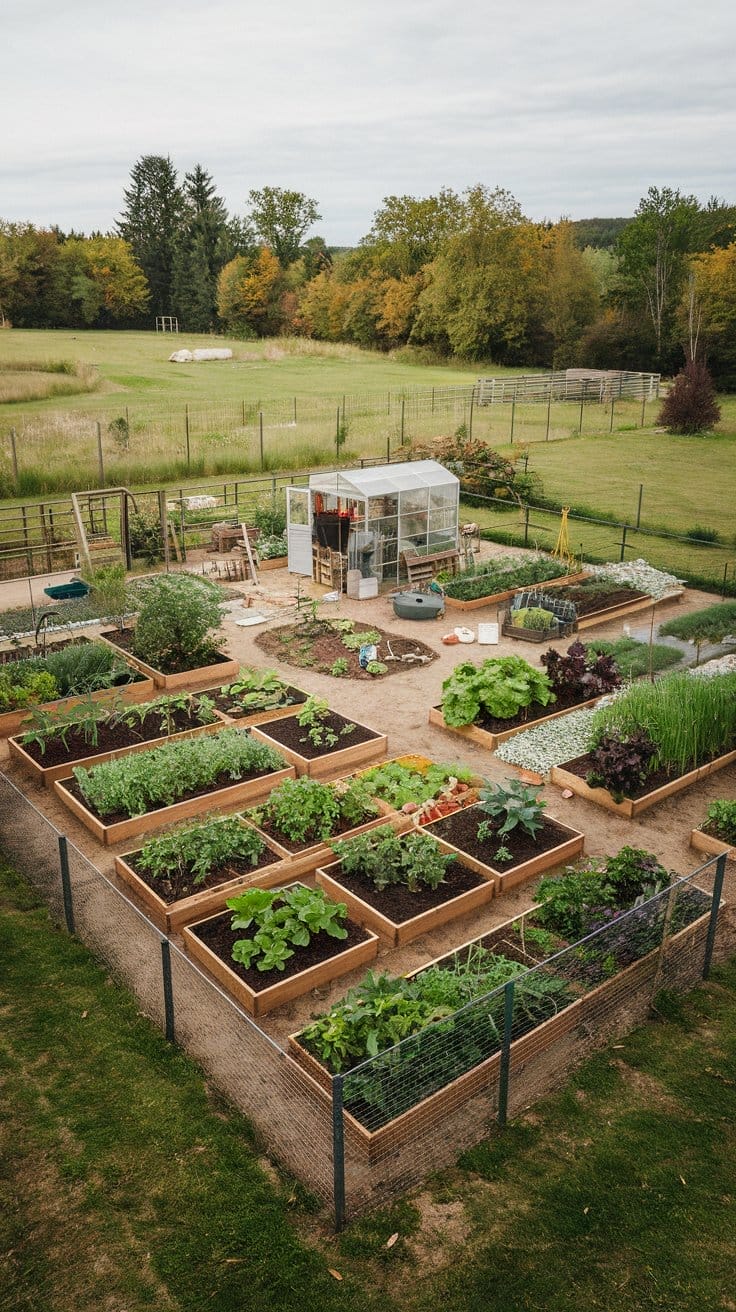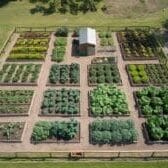This post may contain affiliate links, read more…
Hey there, fellow garden enthusiast! I remember staring at my small backyard a few years ago, wondering if I could really grow enough vegetables to make a difference. Spoiler alert: that tiny patch now feeds my family of four from spring through fall (and longer preserving), and I’m here to show you exactly how you can do it too!
Why Your Own Vegetable Garden Will Change Your Life
Let me tell you something amazing – there’s nothing quite like the feeling of serving a salad made from vegetables you grew yourself. It’s not just about the fresh, incredible taste (though trust me, home-grown tomatoes will ruin store-bought ones for you forever!). It’s about connecting with your food in a way that just feels right.
Think about:
- Walking outside in your slippers to grab fresh herbs for dinner
- Teaching your kids where real food comes from.
- Knowing exactly what goes into growing your food (no mysterious chemicals here!)
- Having an excuse to spend more time outdoors (hello, natural vitamin D!)
Getting Started: Yes, You Can Do This!
Remember how intimidating it felt when you learned to cook? Starting a garden is just like that – it seems overwhelming until you break it down into simple steps. Let’s do this together!
First Things First: Your Growing Space
Don’t worry if you don’t have a huge yard – some of the most productive gardens I’ve seen are tiny! Here’s what you need to look for:
- Sunlight Check: Stand in your yard at different times of the day. Most vegetables need 6-8 hours of direct sunlight. Not sure? Take photos every couple of hours – it works like a charm!
- Water Access: Can you reach this area with your hose? Trust me, you don’t want to be hauling watering cans across the yard in August (been there, done that, got the t-shirt!).
- Soil Touch: Squeeze a handful of your soil. Does it crumble nicely, or is it hard as a rock? Don’t panic if it’s not perfect – we can fix that!

Choose Your Garden Style (It’s Like Picking an Outfit – Make It Work for You!)
Raised Beds – The Beginner’s Best Friend
I started with three 2×4 raised beds, and it was the best decision ever! Here’s why:
- Your back will thank you (no extreme bending)
- Perfect for small spaces
- Easier to control weeds (hallelujah!)
- Better drainage (goodbye, muddy mess)
In-Ground Gardens – The Traditional Route
If you’ve got good soil and more space, this might be your jam:
- More growing space for your buck
- Perfect for root vegetables
- Nature does most of the work
Vertical Gardens – The Space-Saving Superstar
This was my game-changer when I ran out of ground space:
- Grow up instead of out
- Perfect for patios and small yards
- Looks absolutely gorgeous (hello, Instagram-worthy garden!)
The Fun Part: What to Grow First
Let’s start with some foolproof vegetables that’ll make you feel like a garden genius:
- Lettuce – Ready in just 30 days! Plant a few seeds every week for endless salads.
- Cherry Tomatoes – They’re like the golden retrievers of the garden world – friendly, productive, and hard to mess up.
- Herbs – Basil, mint, and parsley are like garden cheerleaders – they’ll make you feel successful from day one.
- Cucumbers – Give them something to climb, and they’ll reward you with endless summer refreshment.

Your Simple Success Plan (I Wish Someone Had Told Me This Earlier!)
Week 1: Setting Up
- Build or buy your raised bed (or clear your garden spot)
- Get your soil ready (mix in some compost – it’s like vitamins for your garden)
- Plan your watering strategy (trust me, this is crucial)
Week 2: Planting Time
- Start with just 3-4 types of vegetables
- Space them properly (I’ll include my handy spacing guide below)
- Add mulch to keep the moisture in
Weeks 3+: Maintain and Watch the Magic
- Water deeply but less frequently
- Check on your garden daily (it’s like meditation, but with purpose!)
- Celebrate every tiny sprout (yes, garden happy dances are a thing!)
Common Oops Moments (We’ve All Been There!)
- Starting too big (excitement is good, overwhelm isn’t)
- Forgetting to water (set a phone reminder – it works!)
- Planting too close together (give those babies room to grow)
- Neglecting the soil (think of it as your garden’s foundation)
Your Garden Care Routine (Keep It Simple!)
Daily:
- Quick visual check (morning coffee garden walk, anyone?)
- Water if needed (stick your finger in the soil – if it’s dry past your first knuckle, time to water!)
Weekly:
- Remove any weeds (think of it as garden therapy)
- Check for pests (but don’t panic – some bugs are friends!)
- Harvest ready vegetables (the best part!)

Ready to Start Your Garden Adventure?
Remember, every experienced gardener started exactly where you are now – with a dream and a few seeds. Your garden doesn’t have to be perfect; it just has to be yours. Start small, learn as you grow, and most importantly, enjoy the process!
Want more specific tips? Drop a comment below with your biggest garden question.
Happy growing!
P.S. Remember, every tomato you grow is a small victory. Celebrate them all!
How big should a backyard vegetable garden be?
For beginners, start with 4×8 feet or smaller. This size allows for 4-5 different vegetables while remaining manageable.
What vegetables are easiest to grow in a backyard garden?
Lettuce, cherry tomatoes, bush beans, radishes, and herbs are ideal for beginners due to their resilient nature and quick harvest time.
How many hours of sun does a vegetable garden need?
Most vegetables require 6-8 hours of direct sunlight daily for optimal growth. Some leafy greens can tolerate partial shade.
When should I start a backyard vegetable garden?
Start planning in winter, prepare soil in early spring, and plant after the last frost date in your region. For most US zones, this means planting between March and May.

Download your guide for free!
Learn how everyday products could be affecting your health and how simple swaps can lead to a cleaner, safer home.
Recent Posts
Share on Social

Grab your Free Gluten Free Recipe Pack
Discover 45 easy, healthy, and tasty recipes, including breakfast, lunch, dinner, treats and smoothies!
Recent Posts

Strawberry Growing for Beginners: Essential Tips and Tricks




